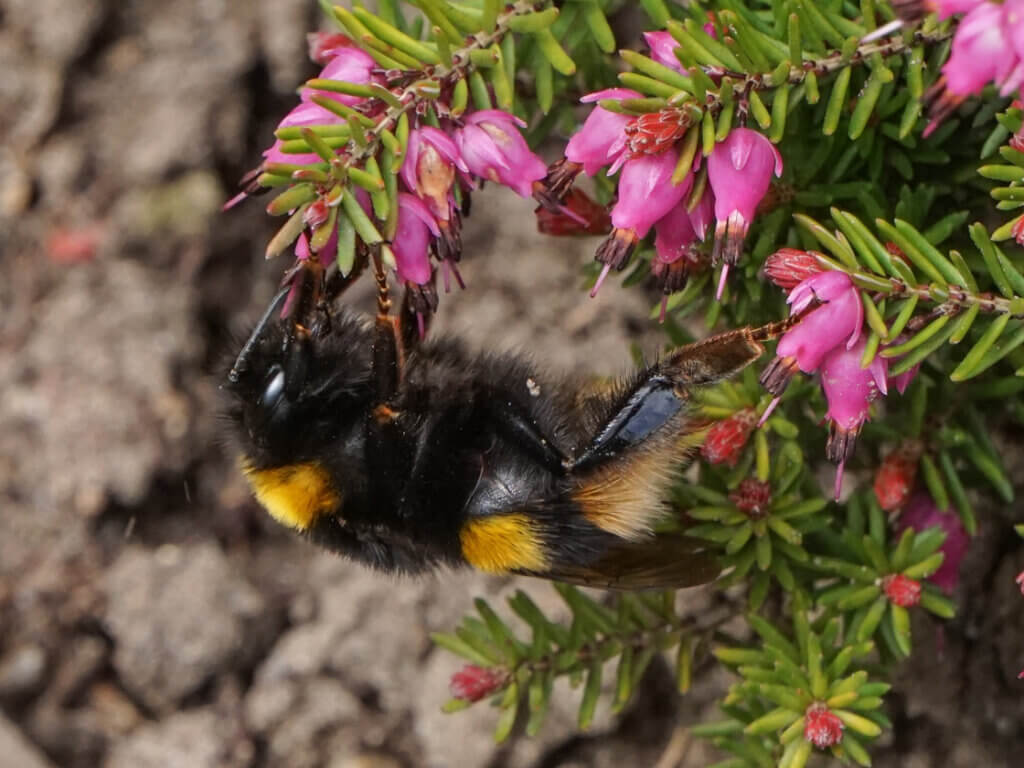
Social Distancing Week 1, Buff-tailed Bumblebee
I had great plans this year to visit several parts of the UK looking for new insects, unfortunately the plans have come to a halt. I have decided instead to search locally, avoiding as much human contact as possible. Fortunately I live in a quiet area of North Yorkshire on the edge of farmland, so am able to roam quite widely without meeting anyone. I have possibly the whole of spring and summer in front of me so I hope I can find enough to keep me occupied.
Bumblebees are one of the first insects to appear out of hibernation and it is usually in the middle of March that I have my first sighting of a queen. This year it was the Buff-tailed Bumblebee (Bombus terrestris) that appeared first. It was on 16 March in my garden. I first saw it zigzagging through the undergrowth, probably looking for a suitable nest site (I hope it found one). Later it appeared, covered in pollen, on a patch of heather, obviously having a good feed. After emergence, the queen bee’s first task is to feed up, having lost weight during hibernation, then establish a nest and provision it. Once this has happened she will lay her eggs and brood them. Her job is then over. After a few weeks a new generation of worker bees will emerge.
As its name suggests the Buff-tailed Bumblebee has a dirty yellowish white tail. It also has two bright yellow bands. This combination makes it easy to identify. The heather in my garden is a great magnet for this species and also other bees so I am constantly on the lookout. I photographed this one a few years ago on 18 April, on the same patch of heather.
[registration_form]
Our first queen appeared on winter-flowering honeysuckle on 11 January here in Oxfordshire. We’re getting workers now. The honeysuckle is nearly over but pulmonaria and primroses have taken over.